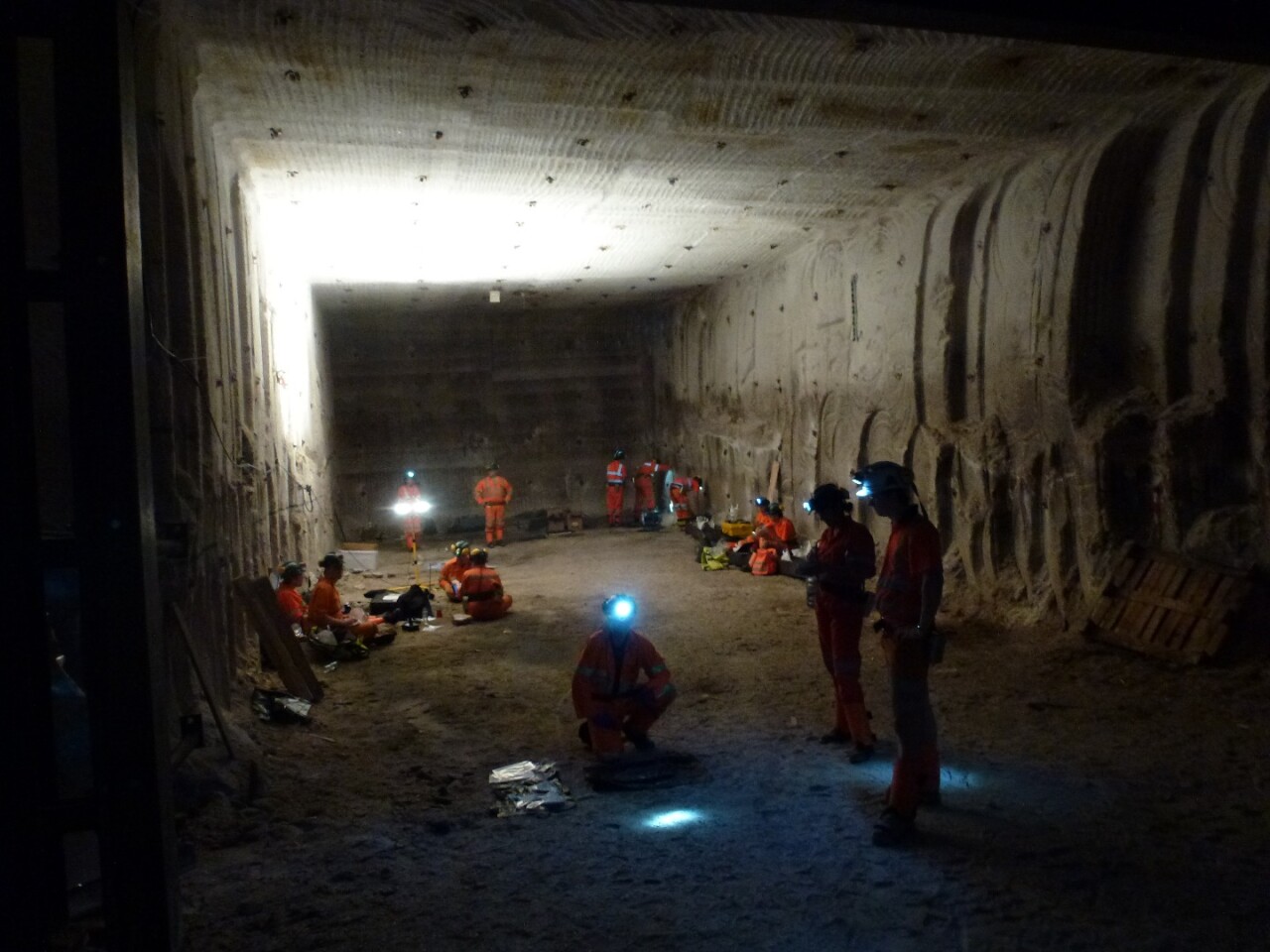A consortium of American and British science institutions, led by the Lawrence Livermore National Laboratory (LLNL), is working on a way to use antineutrinos to remotely monitor nuclear reactors. Sponsored by the US Department of Energy's National Nuclear Security Administration, the Advanced Instrumentation Testbed (AIT) program is installing the 3,500-ton WATer CHerenkov Monitor of ANtineutrinos (WATCHMAN) detector in a 1,100-meter-deep (3,600 ft) mine located on the northeast coast of England as part of international nuclear weapon non-proliferation efforts.
Controlling the spread of nuclear weapons is a major international concern, and a key aspect of this is being able to remotely monitor nuclear fission reactors to ensure that they aren't being used for the production of weapons-grade plutonium. This remote sensing is needed at both short range to examine reactors without having to remove their fuel rod assemblies, and at long distances to assess reactors in the hands of unfriendly powers.
One promising method for doing this uses antineutrinos. Discovered in 1950, the antineutrino is the antimatter version of the neutrino and is produced in nuclear reactions when a neutron decays into an electron, a proton, and a neutrino. Like the neutrino, antineutrinos are the tiniest of elementary particles, with a mass a million times smaller than an electron and no electric charge.

One notable property of antineutrinos is that they have very little interaction with matter. Where an alpha particle can be stopped by a sheet of paper, antineutrinos can go through a sheet of lead a light year thick without even slowing down. In fact, at this very moment, you are being bombarded with billions or trillions of antineutrinos without even being aware of it.
So trying to detect antineutrinos may sound a bit pointless, but according to physicists, if you take a tank of water 16 m (52 ft) tall and 16 m in diameter, and dope it with trace amounts of the rare earth metal gadolinium, it makes the protons in the water much more sensitive to antineutrinos. Such a tank is the central component of WATCHMAN.
The next problem is being able to detect the desired antineutrinos being produced by a suspect reactor. That's tricky because using the tank on the surface of the Earth is like sticking a radio telescope in the middle of a forest of mobile phone towers, walkie talkies, Wi-Fi transmitters, and electrical substations. The telescope may be working just fine, but any signal it's seeking will be drowned out by interference. To overcome this, WATCHMAN is being installed in Great Britain's deepest mine.
Run by ICL-UK /Cleveland Potash Ltd, the Boulby Mine was originally opened to dig up potash, polyhalite and salt. It still does this, but it has a second career as the UK Science and Technology Facilities Council's Boulby Underground Laboratory. Funded by the British government, it is already host to underground studies in the astrophysics of dark matter, geology, geophysics, climatology, the environmental sciences, and the study of life in extreme in environments on Earth and in outer space. WATCHMAN is slated to be placed in an excavated cavern on the site and is scheduled to go into operation around 2023.

According to LLNL, when it is up and running, WATCHMAN will be used to detect the individual reactors at the Hartlepool two-core reactor complex 25 km (15 mi) away as they are switched off and on. Previous attempts at antineutrino detecting had to operate at much shorter distances.
To detect antineutrinos, the tank of doped water is monitored by water-based liquid scintillators, fast photo-sensors, light concentrators and other sensors. One goal of the project is to improve the sensitivity of these instruments, making them more directional and less susceptible to background noise, while new algorithms and techniques can better extract and analyze the antineutrino signals.
LLNL says that WATCHMAN already provides a 1,000 fold increase in monitoring distance over the laboratory's previous work. Though the primary emphasis is on enforcing non-proliferation treaties, the new detector has other applications, including in geoscience and astrophysics.
"In the long term, WATCHMAN-style water-based detectors can give us new insights into the mysterious properties of neutrinos, and even help us resolve the long-standing mystery of the great disparity between the amount of matter and antimatter in the universe," says LLNL physicist and AIT principal investigator Adam Bernstein. "WATCHMAN itself, once commissioned, will become one of a small set of large antineutrino detectors worldwide that are capable of detecting antineutrino bursts from supernovae."
The AIT consortium consists of LLNL, Lawrence Berkeley and Brookhaven national laboratories, UK Atomic Weapons Establishment (AWE), Boulby Underground Laboratory, the University of California (UC), Berkeley, UC Davis, UC Irvine, University of Hawaii, Iowa State University, Pennsylvania State University, University of Pennsylvania, University of Michigan, and University of Sheffield.
Source: LLNL







